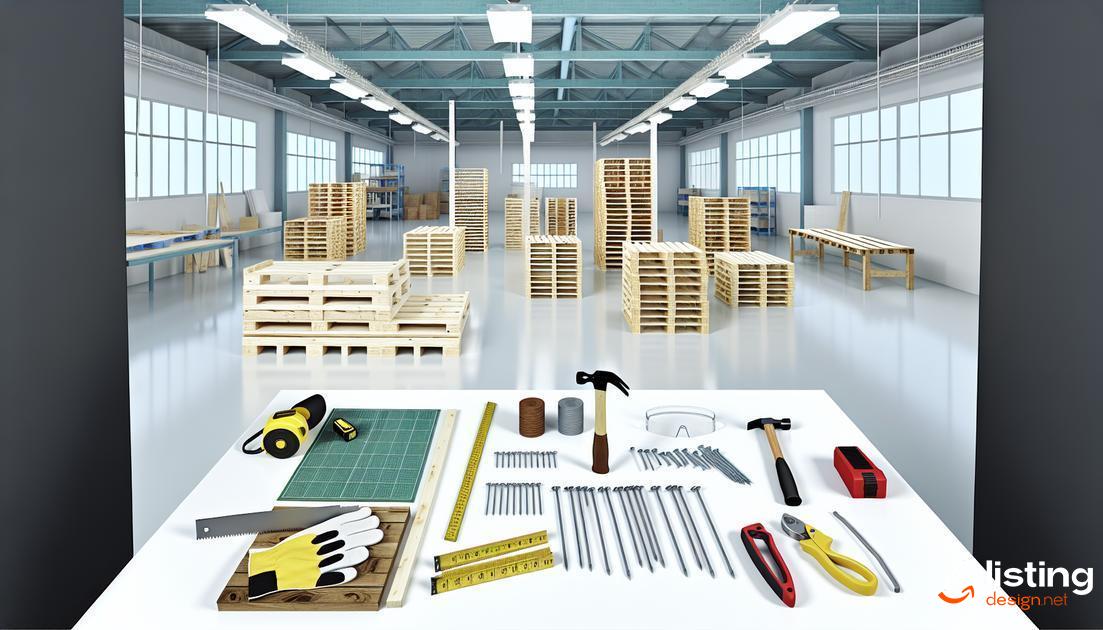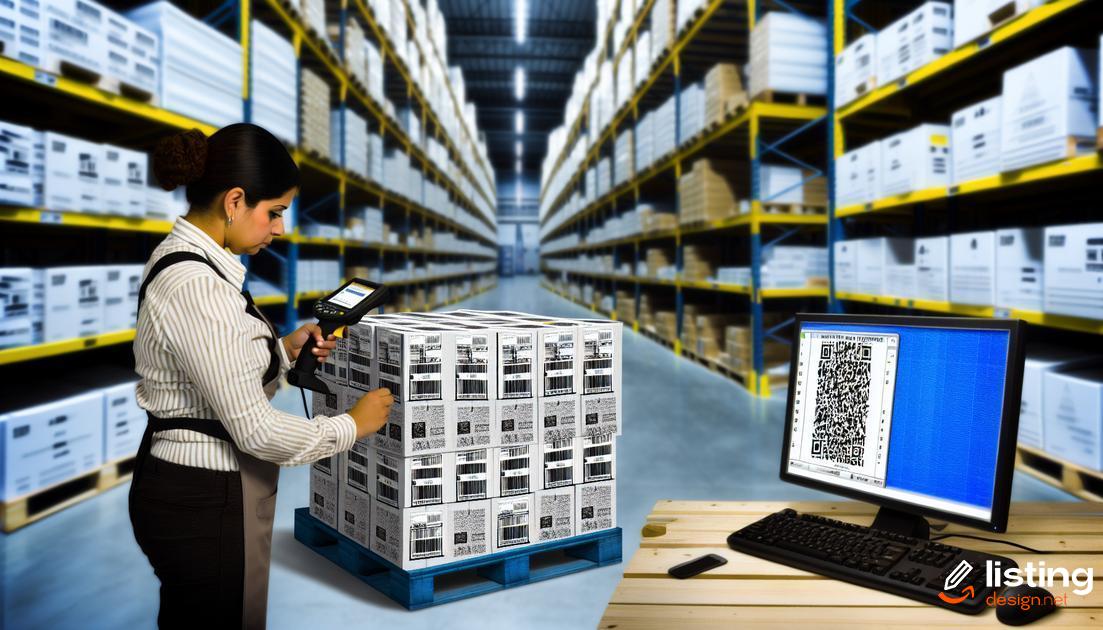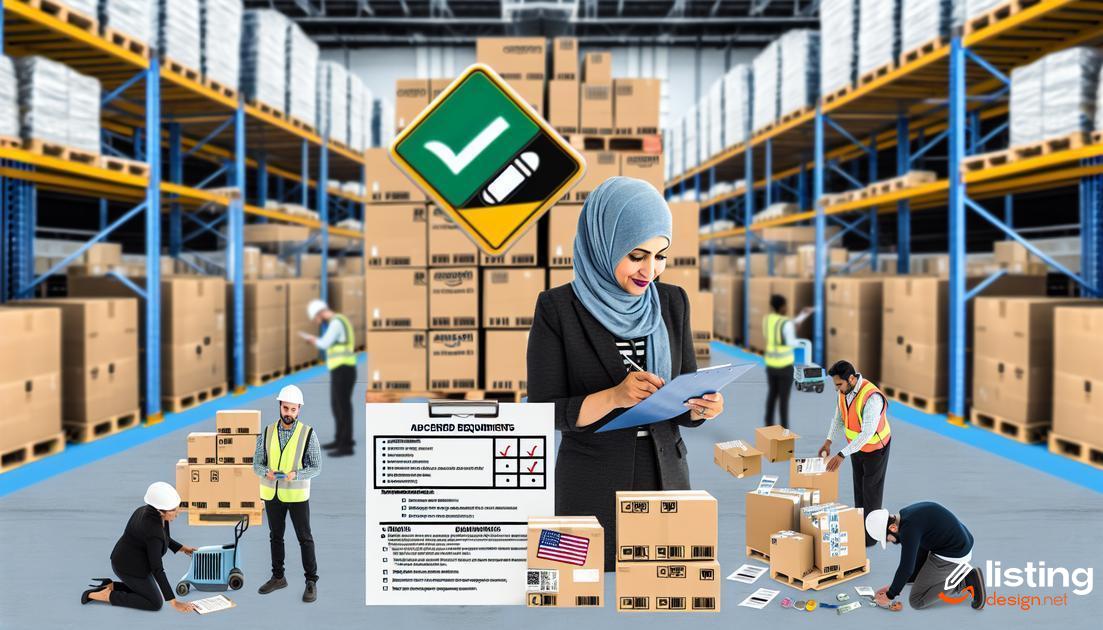Understanding Amazon FBA pallet requirements is crucial for any seller looking to streamline shipments and ensure compliance. Proper pallet preparation prevents delays, damages, and additional costs. Knowing the basics like dimensions, weight limits, and labeling can save you a lot of trouble down the road. In this guide, we break down everything you need to know to make sure your pallets meet Amazon’s strict standards.
Table of Contents
Why Follow Amazon FBA Pallet Requirements?
Compliance with Amazon FBA pallet requirements ensures that your goods arrive at Amazon’s fulfillment centers in optimal condition. Following these guidelines helps in avoiding delays and additional costs. Failure to meet these requirements can result in penalties, rejected shipments, or even loss of seller privileges.
Amazon has strict pallet dimensions and weight limits. Adhering to these specifications ensures smooth processing through their automated systems. Standard GMA pallets are often recommended. It is crucial to use the right materials, such as durable shrink wrap and edge protectors, to secure your items and improve pallet stability.
Proper labeling and documentation are vital. Amazon requires specific labels for identification and tracking purposes. Mislabeling can lead to misplaced inventory or processing delays. Each pallet must have a pallet ID label and individual boxes must be labeled accurately.
Pallet stability and safety are paramount. Ensuring that the pallet is not overpacked, and that boxes are stacked securely, reduces the risk of damage during transport. Using corner boards and stretch wraps tightly binds the load together, enhancing overall support.
By following Amazon FBA pallet requirements, sellers can streamline their fulfillment process, improve efficiency, and maintain high customer satisfaction levels. Avoid common mistakes such as using non-compliant pallets, incorrect labeling, or insufficient securing methods.
Benefits of Meeting Pallet Requirements
Understanding why it is necessary to adhere to these requirements can lead to smoother operations and a more efficient supply chain.
Essential Materials for Pallet Preparation

Essential Materials for Pallet Preparation
When preparing pallets for Amazon FBA, ensure you have all necessary materials. Start with high-quality pallets that meet Amazon’s specifications. You’ll need sturdy shrink wrap to secure your items firmly. Corner boards are essential for protecting product edges. Use strapping tape to reinforce stability. Have pallet labels and FBA shipment labels ready for proper identification and tracking. Lastly, safety is key, so use pallet jacks or forklifts to handle your pallets appropriately.
Amazon FBA Pallet Dimensions and Weight Limits
Amazon FBA Pallet Dimensions and Weight Limits
To ensure your products briskly meet Amazon’s requirements, pay close attention to pallet dimensions and weight limits. A standard pallet size must measure 40 inches x 48 inches. Additionally, the total weight of a single pallet should not exceed 1,500 lbs. These guidelines are critical to guarantee that your shipment processes seamlessly.
Stacking cartons on your pallet also plays a significant role. The height of the pallet should not exceed 72 inches, including the pallet base. Items should be uniformly distributed to maintain balance and prevent toppling. If your goods indirectly tallied tip over the height limit, consider dividing them into separate pallets.
Concerning dimensions, strict adherence prevents bottlenecks during storage and handling in Amazon warehouses. Remember, pallets that fail to comply with these specifications may face rejecting or delays, hampering your supply chain.
Finally, heed proper wrapping methods. Use stretch wrap to secure your items, ensuring they remain intact and stationary during transit. This precludes damages and ensures that your goods berth in pristine condition, ready for Amazon’s logistical procedures.
Labeling and Documenting Your Pallets

Properly labeling and documenting your pallets is crucial to ensure smooth processing at Amazon’s fulfillment centers. Incorrect labeling can lead to delays or rejections, affecting your inventory’s availability and your sales performance.
Label Placement
Amazon requires labels to be placed on all four sides of the pallet. Ensure each label includes the following information:
- FBA shipment ID
- SKU and product details
- Quantity of units
Use a high-quality printer to make sure labels are clear and scannable. Water-resistant labels are recommended to withstand any environmental conditions during transit.
Documentation is just as significant. Make sure all necessary documents, such as the Bill of Lading (BOL) and packing list, are prepared and accessible. Attach a copy of the BOL to the pallet and keep an additional copy for your records.
Electronic Documentation
Amazon FBA also supports electronic documentation. When possible, submit your shipment documentation online to expedite the receiving process.
Following these steps meticulously will help minimize issues and keep your inventory moving steadily through Amazon’s network.
Ensuring Stability and Safety of Your Pallets
Proper pallet stability and safety are crucial when shipping products to Amazon FBA. Start by using high-quality pallets that can carry the weight of your goods. Heavier items should be placed at the bottom, with lighter ones on top, ensuring a balanced weight distribution.
Wrap the pallet securely using stretch film to keep items in place during transit. For extra security, use corner boards and strapping methods. This helps in maintaining the shape and integrity of your pallet.
Check for any overhanging products, as these can create instability and may be prone to damage. Product overhang not only risks the items but may also violate Amazon’s guidelines. Keeping everything within the pallet’s perimeter is essential.
Finally, conduct a shake or tilt test to see if any items shift. If movement occurs, re-secure the items before shipping. Keeping pallets stable and safe minimizes the risk of damage and non-compliance issues, ensuring a smoother process for your Amazon FBA shipments.
Common Mistakes to Avoid

Improper Labeling
Incorrect or missing labels might result in your shipment being rejected. Ensure barcodes are scannable and utilize proper print quality.
Ignoring Weight and Dimension Limits
Pallets exceeding size or weight restrictions can lead to additional fees or delays. Verify that your pallets conform to Amazon’s specified limits.
Poor Pallet Quality
Low-quality pallets can break during transit, causing damage to goods. Use durable, high-standard pallets to avoid these issues.
Skipping Stretch Wrapping
Not wrapping pallets properly can make them unstable. Use quality stretch film to secure the products on the pallet firmly.
Incorrect Pallet Configuration
Piling products randomly might cause instability. Follow Amazon’s guidelines for arranging products on the pallet to maximize stability.
Overlooking Safety Guidelines
Failure to adhere to safety measures can endanger handlers and merchandise. Stick to all prescribed safety protocols for pallet preparation.
Benefits of Meeting Pallet Requirements
Meeting pallet requirements is crucial for any seller using the Amazon FBA program. By adhering to these guidelines, sellers can ensure their products are received and processed efficiently. This can lead to faster shipping times and a better customer experience.
Complying with pallet requirements helps in avoiding additional fees that Amazon may charge for improperly prepared shipments. It also reduces the risk of products getting damaged during transit due to improper stacking or insufficient packaging.
Another benefit is the smoother inventory management at Amazon’s warehouses. Properly prepared pallets facilitate quicker storage and retrieval, which can improve overall operational efficiency.
Meeting these requirements can result in fewer delays in processing your inventory. This means your products get listed faster, improving the chances of sales and customer satisfaction.
Final Tips for Amazon FBA Pallet Success

Review All Requirements: Before finalizing your pallet, double-check Amazon’s FBA requirements. Ensure all guidelines for dimensions, weight, labeling, and documentation are strictly followed.
Use High-Quality Materials: Invest in durable pallets and packing materials. Sturdy pallets reduce the risk of damage during transit and ensure compliance with Amazon’s standards.
Optimize Packing Method: Stack items evenly and use appropriate wrapping techniques to secure the load. This prevents shifting and maintains the integrity of your shipment.
Label Correctly: Ensure all labels are properly affixed and visible. Incorrect labeling can cause delays or rejections at the fulfillment center.
Conduct Stability Checks: Verify the pallet’s stability by gently pushing it to see if it remains upright. Any instability could lead to accidents and non-compliance issues.
Test for Weight Distribution: Ensure weight is evenly distributed across the pallet. Uneven weight can cause tilting and potential damage.
Document Everything: Keep thorough records of your shipments, including photos and copies of documents. This aids in troubleshooting any issues that may arise.
Consult Amazon’s Resources: Frequently check Amazon’s FBA guidelines and updates to stay compliant and adjust your processes as necessary.


